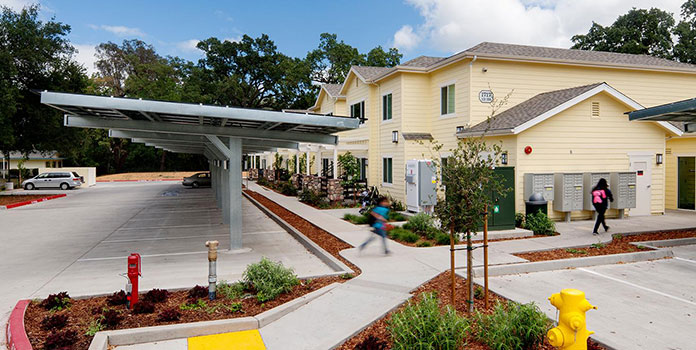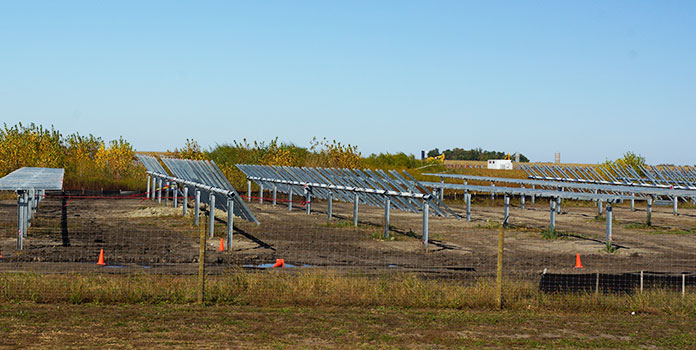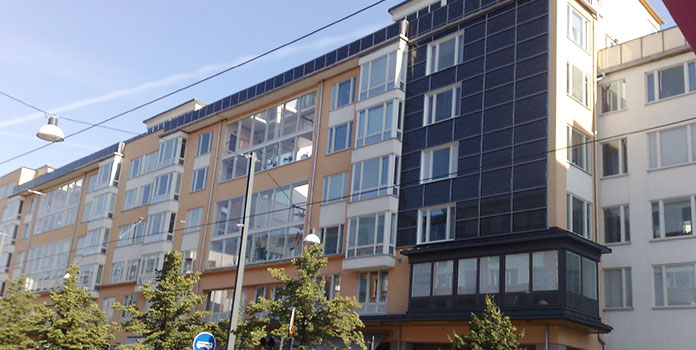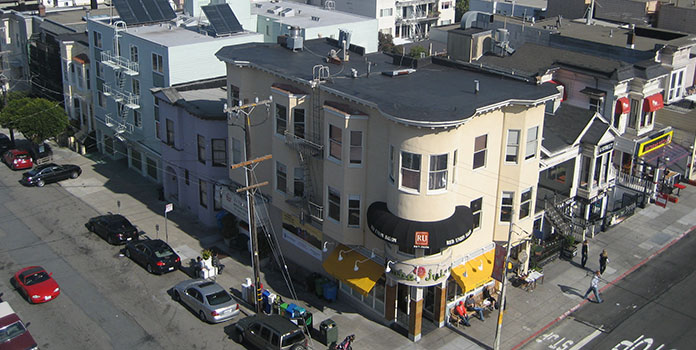Solar Panels for Apartments Aren’t Limited to Your Own Roof

No longer is solar – and all its financial benefits – out of reach for apartment renters.
Helping apartment renters to go solar is a huge challenge to the industry, as renters typically don’t have the authority to install solar and property owners can be reluctant to dish out the cash for a solar installation, since they don’t see any financial benefit themselves.
In an effort to alleviate the issue, solar industry researchers and analysts have come up with some great options for solar panels for apartment dwellers. Options now run from new financing mechanisms to completely new forms of ownership that allow a renter to own solar in a remote location – just not on their own roof.
Let’s walk through the different options available to renters looking to install solar.
Option #1: Work with your landlord
If you live in a rented apartment, chances are you pay for your own electricity. Exactly how much electricity you use doesn’t affect the building owner at all, even though she owns all the wiring and fixtures, since you pay your own bill each month.
Unfortunately, as a renter you don’t have control over the rooftop, so you’re left in a pickle. You want to lower your electric bills, but you don’t own the roof and can’t install solar panels. The building owner, on the other hand, has the ability to install solar panels, but won’t see the financial benefit of lower electricity bills so can be hesitant to install solar. In the utility and solar industries, this is known as the ‘split incentive’.
This is just an issue for solar, but energy efficiency upgrades (like LED lighting and better insulation) as well. Industry analysts and researchers have studied the issue – as well as solutions – for years now. As more and more homes install solar, apartments are an important opportunity that’s been overlooked, as multi-unit low-rise buildings (with large roof space) have huge potential capacity for solar installations. (p.6-146)
Many efficiency departments at utility companies have created new programs to help alleviate this problem for renters (specifically low-income renters) by subsidizing efficiency upgrades and solar, but for the majority of renters, the split incentive issue remains.
Of course, if you’re looking to install solar and you don’t own the roof, the first step is to talk to your building owner! The benefits of going solar are shared among everyone involved, from lower bills and less pollution to a great marketing tool to draw in new tenants. The only issue that remains is the cost, but new ownership and financing options help tackle the split incentive issue.
If you rent and live in a single-family home, the simplest solution is for the landlord to finance and install solar on the roof, then increase your monthly rent to accommodate those payments. You, as the renter, see no difference in your finances (besides lower electric bills, hopefully) since you’re simply paying the building owner instead of the utility. The landlord isn’t losing out financially, either, as you’re paying off the solar panels. Win-win!
To help make going solar even easier, local governments across the country have begun to offer low-interest financing like PACE loans, wherein building owners repay the loan on their yearly property tax bills, and many utilities now offer on-bill financing where the loan amount is added to the customer’s monthly utility bill.
Multi-family units create a more complex situation, but that doesn’t mean solar is completely off-limits. Many states are now passing legislation allowing virtual net metering – an off-growth of traditional net metering.
With virtual net metering, a group of tenants can get together to finance and install a single, large solar installation (possibly even on the roof of the building!). All of the electricity flows to the grid (not your apartment) and the resulting net metering credits are divvied up household by household. So, let’s say you own 30% of the solar installation (6 of a 20 panel ]system, for example), the utility would credit your account for 30% of its total electricity production each month.
If you’ll only be living in the apartment for a short time, setting up a virtual net metering program probably isn’t worthwhile. But if you’ll be there long-term, it’s good investment to both lower your electricity bills and pollution from the avoided fossil fuel generation.
Sixteen states allow virtual net metering, mostly centered around the Northeast, as well as Illinois, Wisconsin, Minnesota, Colorado, and California.
Option #2: Join a community solar garden

If your building owner isn’t keen on installing solar panels on the roof, your next step is to look into a community solar program.
Community solar works on the same principles as virtual net metering above. Individuals buy a portion of a solar installation (usually a specific number of panels), but instead of the panels installed on their roof, they’re placed in a completely separate area – typically a field on the outskirts of the city, a commercial rooftop, an empty lot, or anywhere else that solar can be installed.
Because the installation isn’t connected to your home, you don’t actually use any of the electricity produced. Instead, all the electricity goes straight into the grid. The utility keeps track of how much power is added from the solar array, then allocates bill credits based on ownership (just like the virtual net metering system above).
Community solar was specifically designed to bypass the split incentive issue. As a tenant, your solar installation is completely disassociated from where you live. There’s no need to involve your building owner and in fact, you can freely move from one place to another while continuing to receive financial benefits from of the solar installation.
Community solar projects can be sponsored by utilities, non-profits, or 3rd party companies. While you typically ‘buy in’ at the beginning, some utilities allow you to purchase the electricity your panels produce at a fixed rate, typically for around 20 years. Though the rate might be higher than the going electricity rate at the time, with the average utility increasing rates 2.6% each year, you’ll likely save money long-term.
Community solar gardens exist in 36 states, with a cumulative capacity of 768 megawatts – enough electricity to power about 135,000 homes. 16 states have even passed policies encouraging community solar, including California, Colorado, New York, and North Carolina.
Option #3: Create your own mini off-grid system
If neither of those options sound appealing, your last resort is to simply build your own ‘micro-grid’ in your own home. Since you’ll only be able to produce a small sliver of electricity, this option is more a gimmick than actually useful. Still, it’s fun to tinker with producing your own solar electricity and some people have created some truly awesome systems. Take a look at this very clean installation on YouTube:
With utility-sourced electricity so cheap, constructing your own mini-grid isn’t an option to save money or make any serious environmental impacts, but it certainly prods the imagination and every little bit off clean living helps!
For more information on creating your own mini off-grid solar system, check out our article Are Portable Solar Panels for Apartments Worthwhile?
Solar panels for apartments are possible!

You might think that going solar and renting an apartment are mutually exclusive, but it’s quite the opposite! With all the different financing options, virtual net metering, and community solar, going solar – even for renters – is easily doable (though your state needs the right regulations, as we mentioned above).
Even if your building owner refuses to work with you and you can’t join a community solar garden, you can still join the green revolution by building your own mini off-grid system.
Have you gone solar in an apartment before? We’d love to hear about your experiences in the comments below.
If you’re looking to install solar on your own roof (that you own), the first step is to talk to a few installers to see what’s available.

